A bunch of sunshine-yellow daffodils on the windowsill brings joy to the heart and the promise of the summer to come. And in Wales on St David's Day (1 March) they are everywhere – bringing a burst of joyful colour to the end of winter.
But have you ever wondered about the journey those daffodils made to get to you? Our expert guide by Dr Twigs Way looks at the history of Britain's daffodil industry and the challenges facing growers today, how and when to plant daffodils and where to see them in the UK.
More related content:
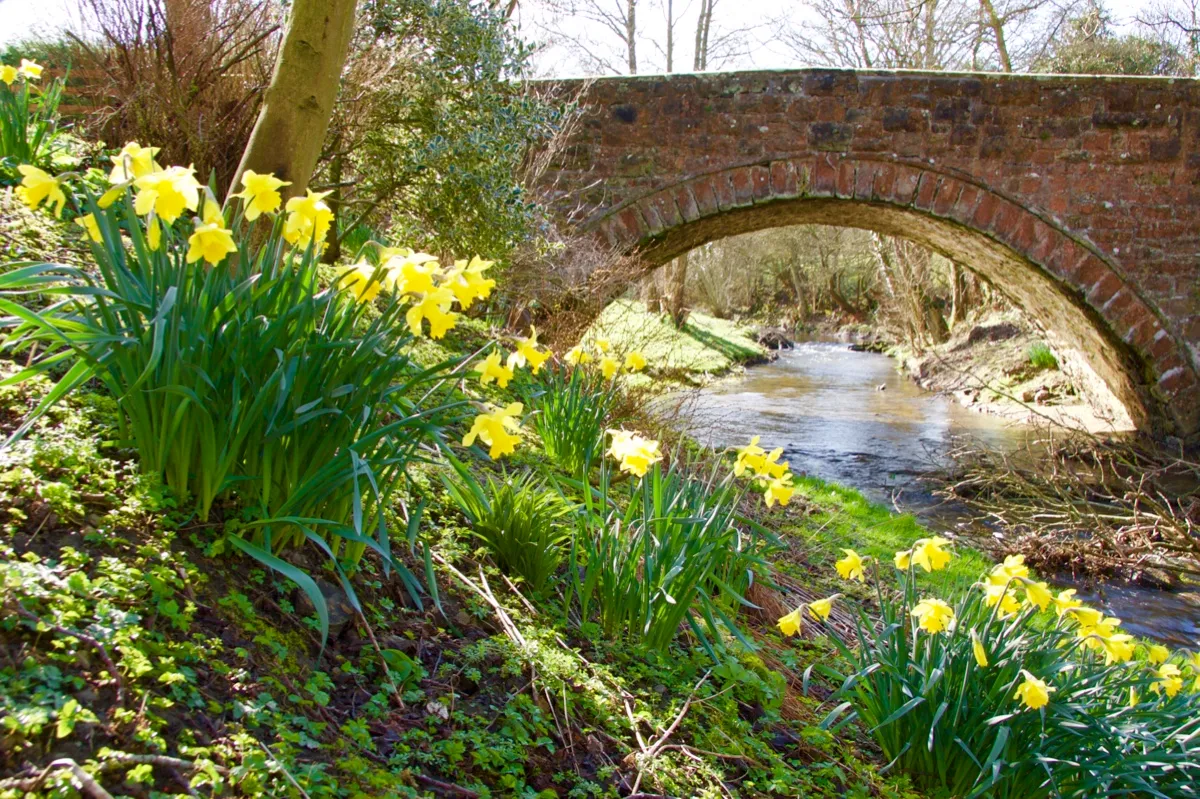
When were daffodils first sold in Britain?
Daffodils of all sizes and shapes have been seen in England since the 17th century; Shakespeare celebrated them as the flower that “comes before the swallow dares”, and bunches of wild blooms were sold by flower girls on the streets of London. However, the farming of daffodils for cut-flower sales did not start until the late 19th century.
In 1875, William Trevellick, a potato farmer on the Isles of Scilly, was struck by the semi-wild narcissi in full flower on the tracks and verges of his farm in January. He realised that by using the weekly freighter from the island then the railway link from Penzance to London – opened in 1859 – he could get these early blooms to the London markets within 48 hours of picking, and more importantly, weeks before they flowered on the mainland. Thirty experimental bunches, sent in a hatbox, earned Trevellick seven shillings and sixpence (37.5 pence), and a week later, more bunches brought him £1.
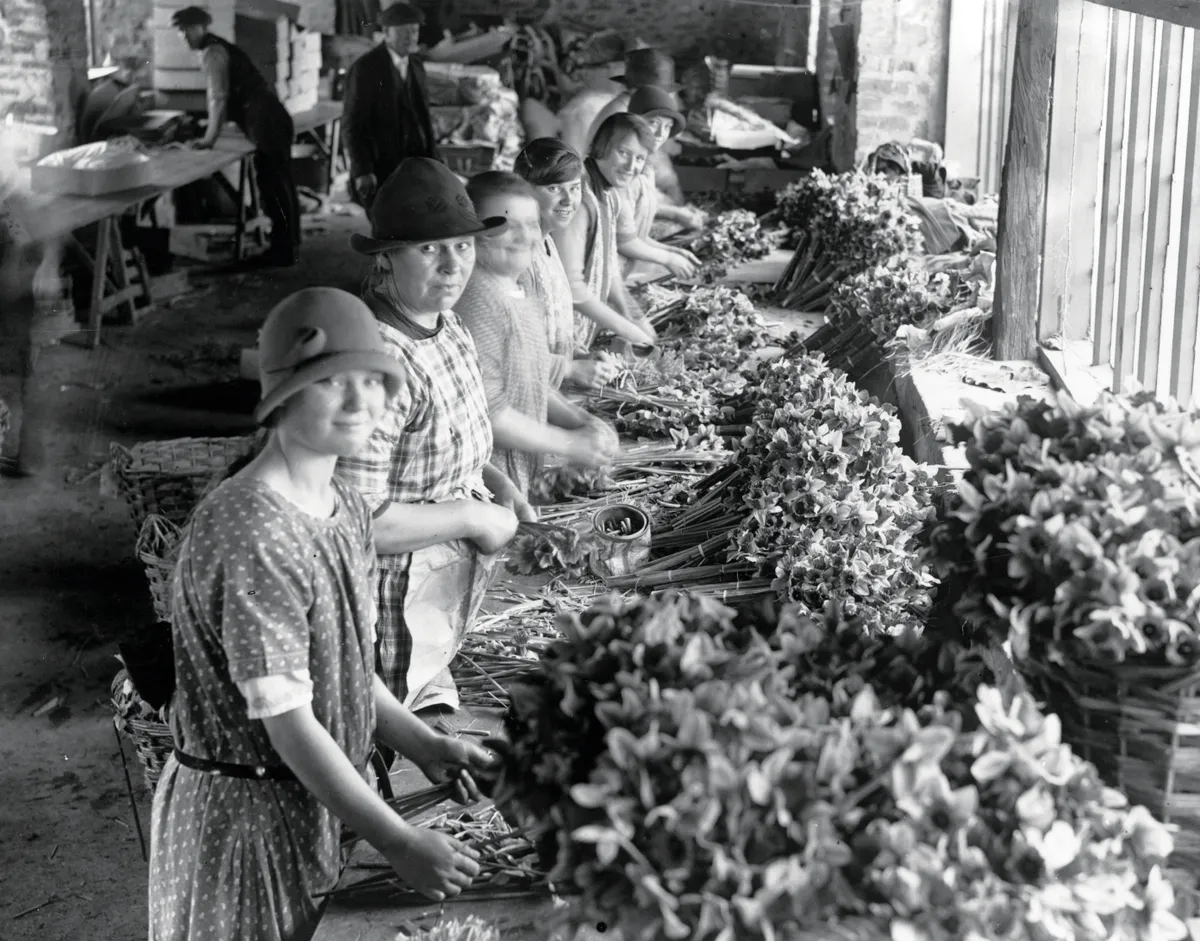
Realising the scheme had potential, Scilly landholder Thomas Dorrien-Smith encouraged his tenant farmers to create bulb-forcing houses, plant shelter hedges and make special wooden boxes for the daffodils. Dorrien-Smith also obtained different varieties to ensure longer supplies. In 1885, 65 tonnes of flowers were sent to the mainland; by 1889, this had reached 198 tonnes, and an industry was born.
Watching the wooden boxes full of Scillonian daffodils pass through Penzance gave Andrew Lawry, farmer at Varfell, the idea of planting his own bulb fields. Although they could not rival the Scilly Isles for earliest flowering, there was more space for the fields and they were not subject to the vagaries of the boat crossing. The area around Varfell, overlooking St Michael’s Mount, is known as the ‘Golden Mile’ and is still a centre of production. Gilles Deprez of Greenyard Flowers, based in Varfell, emphasises the importance of “working with nature and the unique and complex environment of Cornwall”. The company works with conservation bodies, such as the Cornwall Wildlife Trust, to plant trees and protect soils.
Daffodil facts
- The only species of narcissus native to Britain is the rather demur Lent Lily, more at home in orchards and pastures than in the flower vase.
- There are more than 26,000 daffodil cultivars, coming from a gene pool of 56 species, making choosing which ones to plant in your garden quite tricky.
- 'Pheasant’s Eye' daffodil is a member of the poets' group of daffodils, Narcissus poeticus, which are thought to have been the first daffodils to be cultivated. They were described by the Greek writer Theophrastus in the 4th century BC.
- Today, Britain produces 90% of the world's daffodils
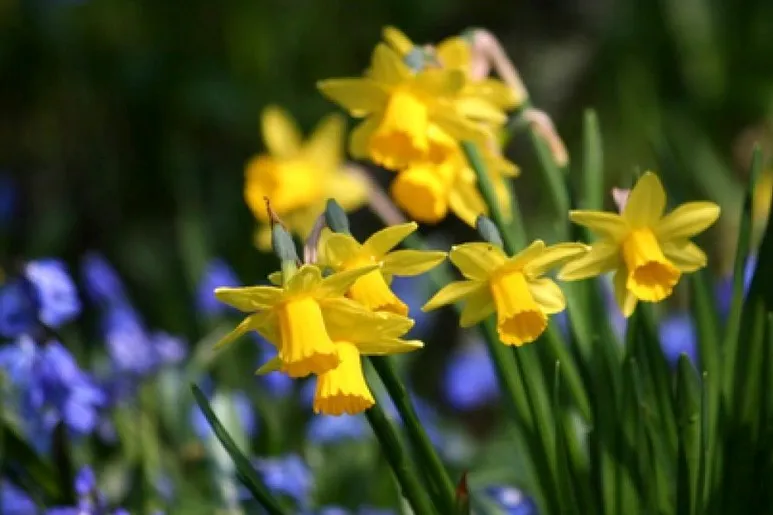
How daffodils grew within the UK
With the south of the country leading the way, lovers of the daffodil soon realised the season could be extended by planting bulbs further north, and daffodil farming spread first to Lincolnshire and then Scotland. Utilising the new railways to rush the cut flowers to market, farmers would extend the blooms into April or even May. Indeed, with modern techniques of soil warming and delayed blooming, the daffodil can overlap Shakespeare’s swallow at both ends of the season.
Those first narcissi that travelled from the Isles of Scilly to fill the vases of the London suburbs were predominantly the ‘Scilly White’ and ‘Grand Soleil d’Or’ varieties, but as the industry developed and spread into other regions, breeders developed larger and brighter flower heads. Foremost among these was ‘Carlton’, developed in Cornwall by Percival Dacres Williams (1865–1935).
Williams named his many cultivars after Cornish villages or Celtic saints and was said to have an almost mystical approach to daffodil breeding, notably not keeping any records of his work. In Cornwall he was followed by Alec Grey, a grower and amateur archaeologist, who developed miniature daffodils for show and sale in pots, another aspect of the market. For the 38 years of its existence, Rosewarne Experimental Horticulture Station at Camborne, Cornwall, explored every aspect of daffodil growing and developed many new varieties still used today.
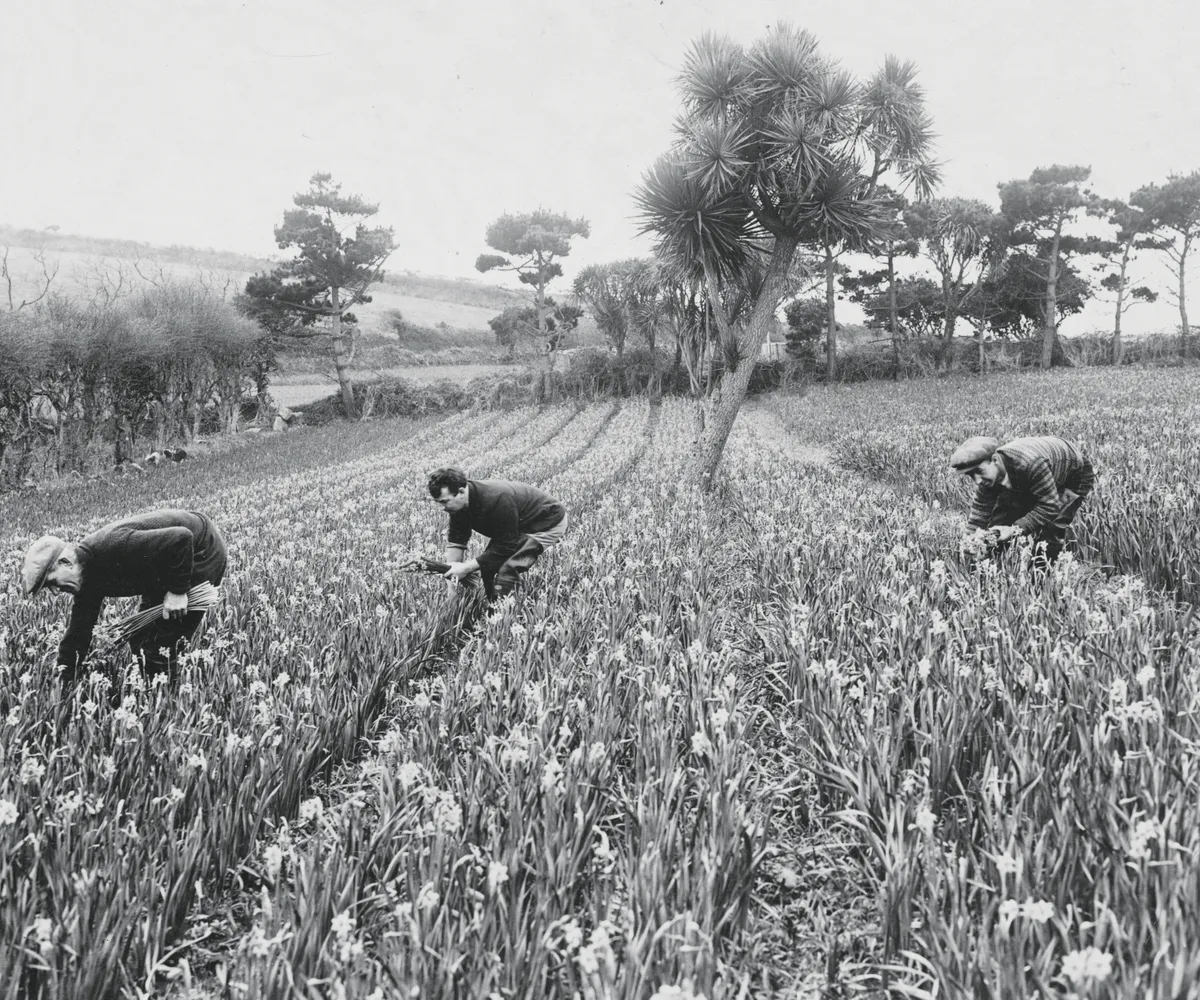
Picking and planting the crop was traditionally a family business, with the men picking while the women worked bunching, tying and packing in flower sheds or barns. On larger farms on the mainland, local agricultural labour was used in the otherwise quiet period of the year, supplemented by itinerant workers. In the late 1950s, 3,000 people were employed in market gardening year-round in the Tamar Valley in Cornwall.
In the spring, daffodil-picking season, the numbers were swelled by a further 10,000 workers concentrating on the famous Tamar ‘Double White’; the secret of its success lay in its good scent and the fact it flowered on the Whitsun bank holiday.
How daffodils are harvested today
Today, recruitment agencies advertise for workers to start in Cornwall at new year and finish in Scotland in late May, with many coming from eastern Europe, a source of labour which may prove more difficult to source in the future. As well as being wrapped against the cold, pickers have to wear gloves and long sleeves to protect from ‘daffodil itch’ – a painful skin irritation that can spread to the mouth.
Daffodils are picked in bud and stored at 1–2°C for their onward journey to the supermarkets and florists of England and Europe – a change from the past when they would be warmed to ensure they opened before dispatch. The only flowers to be sent open now are Narcissus tazetta, such as ‘Pheasant’s Eye’, which are often ‘pulled’ rather than picked to give them longer stems.
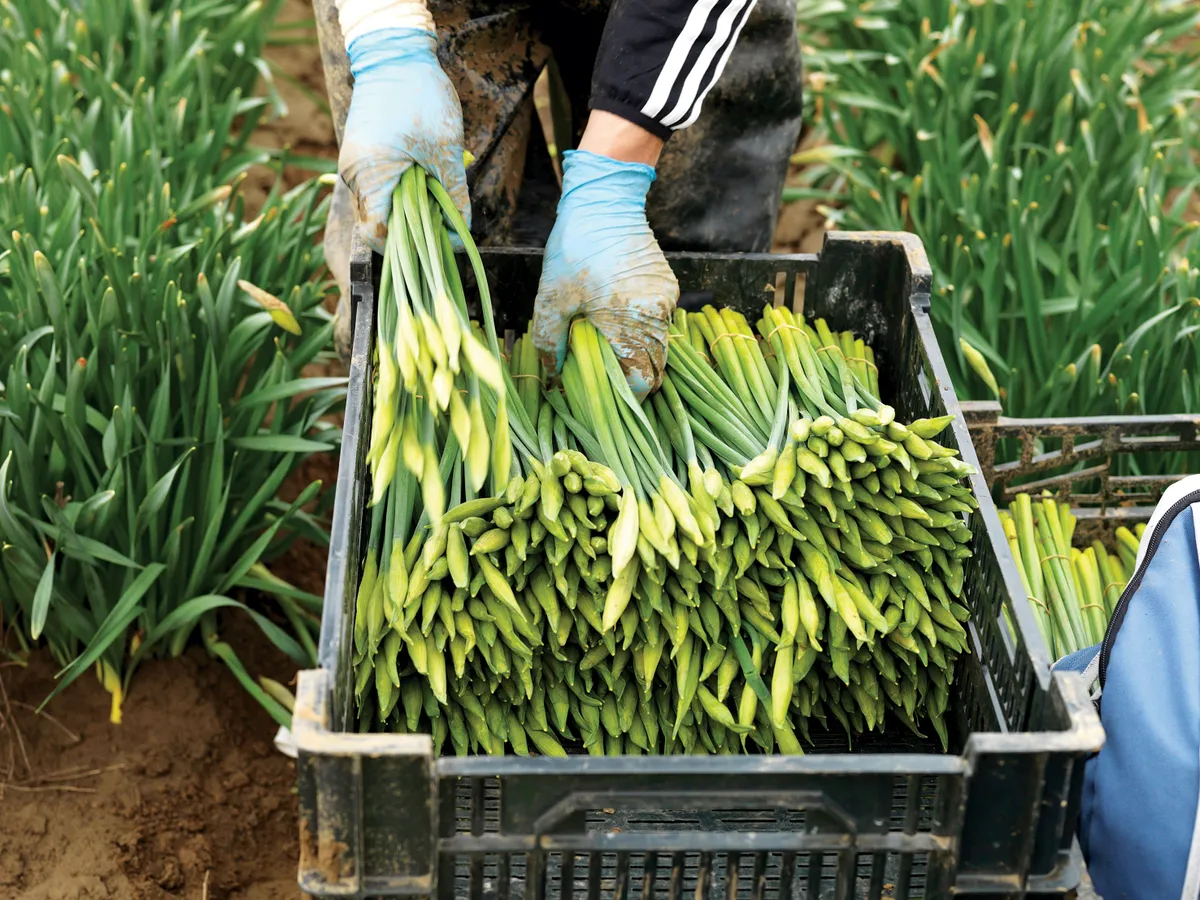
Depending on the scale of the farm and whether it also services the bulb industry, bulbs may be left in the ground for two to four years before being dug up (lifted), dried and sorted, with some kept for replanting.
What was the daffodil plague of 1917?
Keeping bulbs in the ground for several years makes them vulnerable to disease or climate fluctuation. Hardly had the industry set up than it found itself reeling from the effects of daffodil ‘plague’ in 1917, later identified as due to ‘stem and bulb nematode’. Hundreds of acres of bulbs rotted in the fields and the value of farms plummeted. Nematodes – tiny, worm-like creatures – were attracted by the eelworm that also infested the daffodil bulb; eelworms had multiplied due to poor husbandry during the First World War, 1914–18, when labour was short.
In the inter-war period, increased use of glasshouses alleviated rot and resulted in more daffodils being produced in Britain than in any other country. But then, the Dig for Victory campaign of 1939–45 demanded that land used for cut flowers should be turned over to edible crops, and the rail transport of flowers was banned. Bulbs such as ‘Fortune’ – which, when first developed, sold for £50 a bulb – were simply tipped on to verges and field edges, where they still flower today.
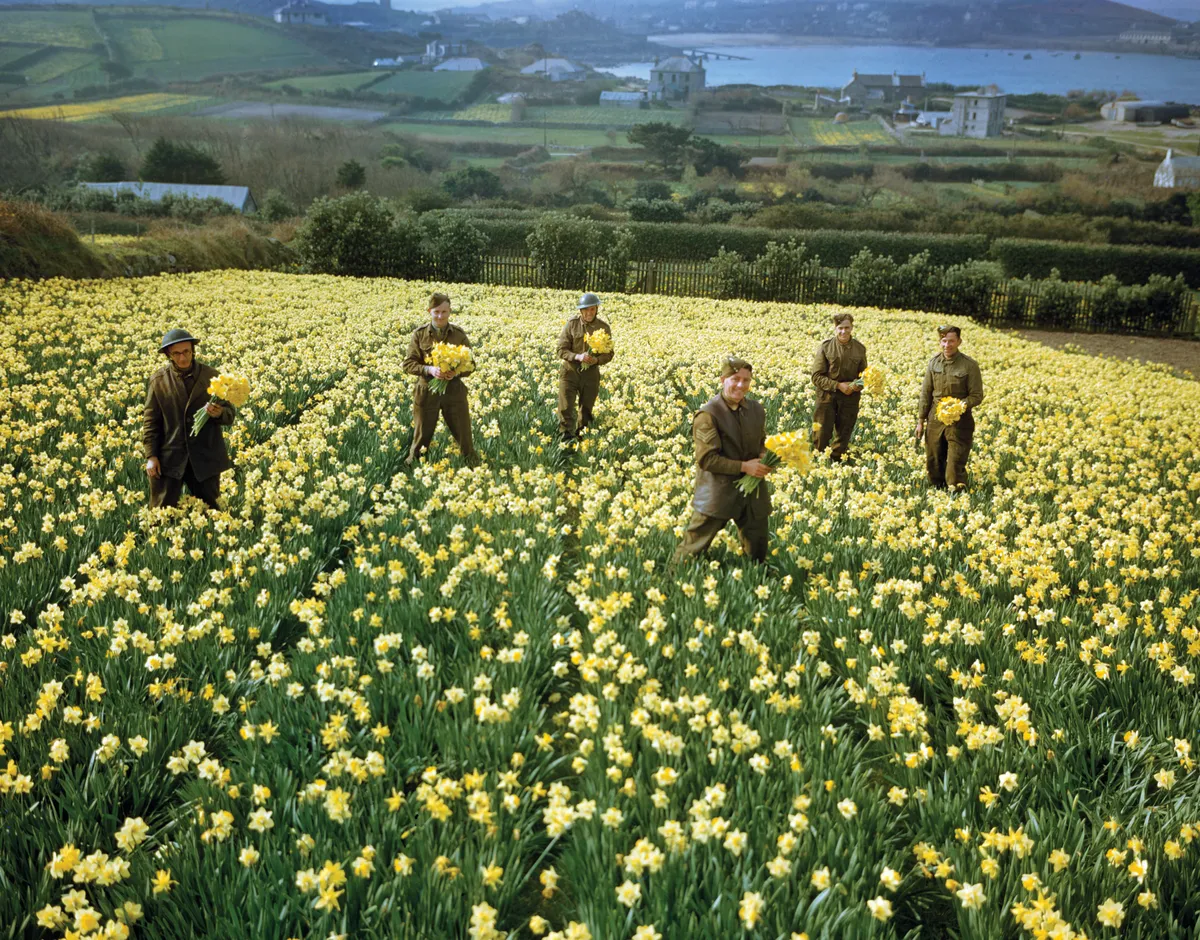
Although daffodil farming has declined in some areas, the UK still produces 90% of the world’s cut daffodils and exports to Europe and the USA; 80% of these daffodils are grown in Cornwall. Grower James Hosking recalls his parents sending their first boxes of Fentongollan Farm daffodils as gifts to friends; today, the farm sells flowers as well as local produce online. Personalisation is the theme at Scilly Flowers, a small family-run farm on St Martin’s in the Isles of Scilly, where Zoe Julian and her husband Ben send beautifully packaged bunches of Paper White and Soleil d’Or to customers by first-class post, via air or sea. A return to the original ‘farm to vase’ service that all started with a hatbox.
How daffodils could help treat Alzheimer's disease
Due to the harsh winter conditions, daffodils grown by sheep farmers in the Black Mountains of Wales for Kevin Stephens have extra high levels of a compound called galantamine, which is used in the treatment of Alzheimer’s disease. The farm produces enough to give 9,000 sufferers their daily dose, but experimentation in the way the flowers are grown and the compound extracted mean the farm should soon be able to produce enough galantamine for 250,000 doses. They are now looking for new growers, who must have land at over 305m altitude to get the best galantamine.
Where to see wild daffodils in the UK
Whether it's the robust yet dainty native wild daffodil or a host of golden cultivars, these vivid flowers are one of the first signs that spring is truly under way. Here are some of the key locations to visit for wild daffodils. Also, don't miss our article on Britain's best daffodil walks.
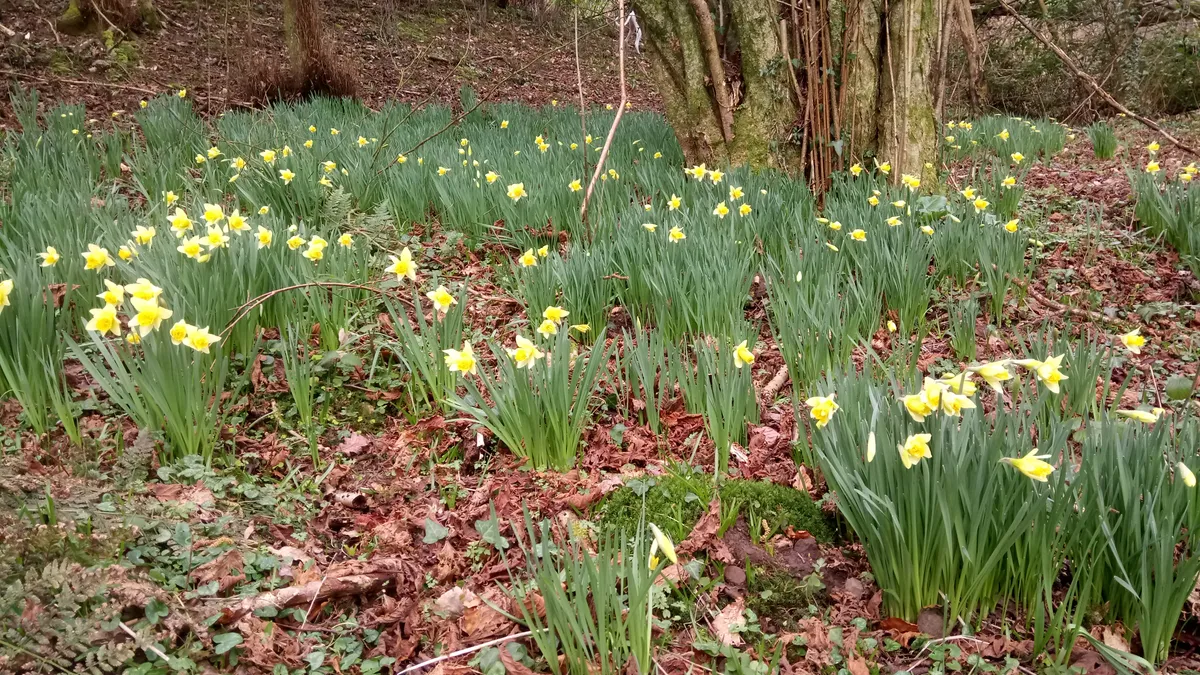
1. The Golden Triangle, Herefordshire/Gloucestershire
2. Butley, Suffolk
A few fields and woods near the attractive town of Newent on the Gloucestershire-Herefordshire border are among the last strongholds of the native daffodil. This areas was once known as the 'golden triangle' – roughly between the villages of Dymock, Oxenhall and Kempley – because of the abundance of flowers, which attracted human admirers from miles around. Even today there is a daffodil festival in mid March in Kempley. One of the best places to see wild daffs here is Vell Mill daffodil meadow managed by the Gloucestershire Wildlife Trust.
Fringed by Rendlesham Forest’s fir plantations, tiny Butley, and its fine display of wildflowers, is a delight to explore in April. The priory woods shine with daffodils, then bluebells across a long spring. Nearby is the extraordinary Staverton Thicks; ancient woodland with some of Europe’s oldest trees. suffolkcoastandheaths.org

3. Isles of Scilly, Cornwall
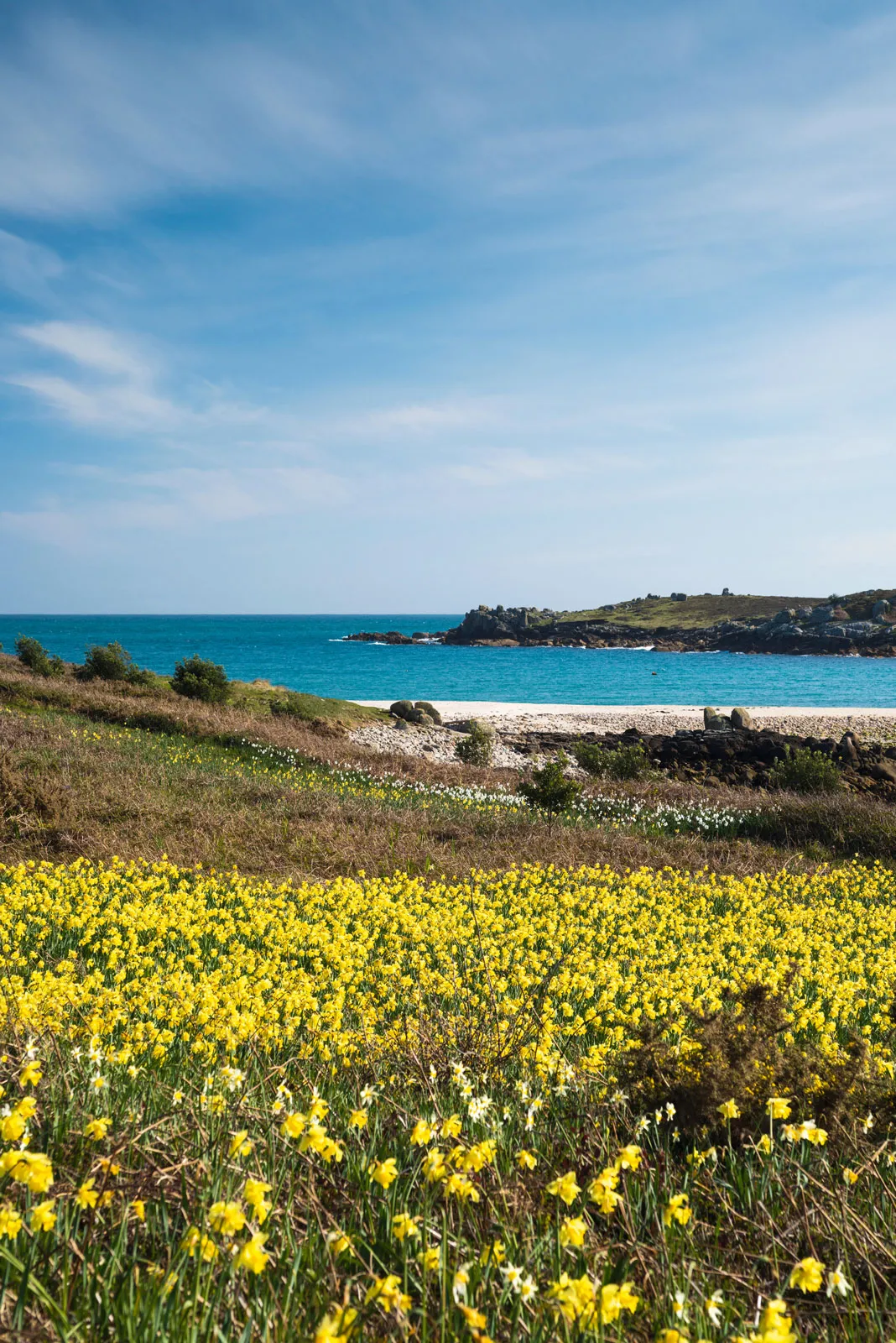
Lemony heads bob above golden sands and an azure sea on the sub-tropical archipelago of the Scillies. These fabulous flowers don’t all end up as florists’ bundles; countless escapee blooms riffle beside the myriad paths that hug the shorelines and crisscross the tiny islands, most notably St Martin’s and Tresco. visitislesofscilly.com
4. Cotehele, Cornwall
One of the best places to see traditional daffodils is Cotehele in Cornwall, where the National Trust is working with volunteers to save the old cultivars that were grown for market at the height of the industry. Collected from hedgerows in the Tamar Valley, there are more than 250 varieties here, including heritage ones from the 17th century.
More daffodil walks
When to plant daffodil bulbs?
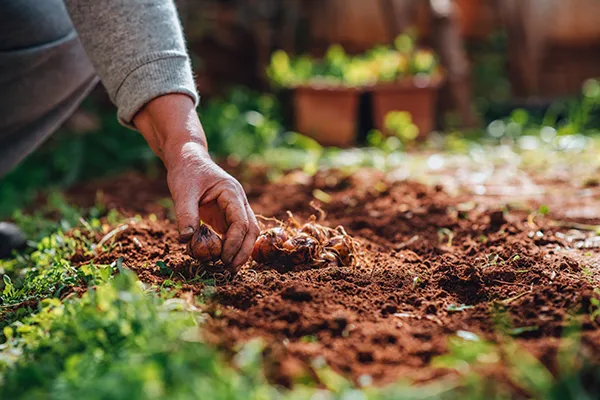
To ensure your garden is filled with colourful daffodils in spring, the best time to plant is between September and November. You can plant as late a January though they may not flower as in the same year. Plant in full sun where you can though they do well in partial shade. Daffodils like free-draining soil and are an excellent choice for pots and other containers.
How should you plant daffodil bulbs
The first big question is how deep should you plant your daffodils? The answer is easy: dig a hole that is twice as deep as the bulb is in height. Place the pointy end of the daffodil facing upwards and cover with soil. Water well and wait for spring! Daffodils will often spread and multiply on their own in a three to five year period so with any luck you will have a larger display to enjoy.
Main image: Getty images
